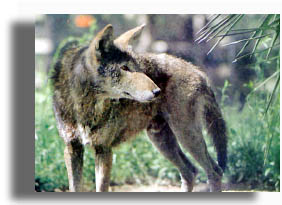General-
 The
only people in this area before 1824 were small groups of
scattered Anglo-Americans; until Don Martin de Leon
founded a town site with 41 Spanish families in 1824. Named for General Guadalupe
Victoria, who became Mexico's first president. Several
historical markers and graves in the Evergreen Cemetery
(Red River and Vine Sts.) cite the de Leon family, who
were very prominent in early Texas colonization.
Victoria, was one of the first three towns
incorporated by the Republic of Texas. Today, Victoria is a major
industrial and agricultural crossroads of South Texas;
also the home of Victoria College and the University of
Houston at Victoria. The
only people in this area before 1824 were small groups of
scattered Anglo-Americans; until Don Martin de Leon
founded a town site with 41 Spanish families in 1824. Named for General Guadalupe
Victoria, who became Mexico's first president. Several
historical markers and graves in the Evergreen Cemetery
(Red River and Vine Sts.) cite the de Leon family, who
were very prominent in early Texas colonization.
Victoria, was one of the first three towns
incorporated by the Republic of Texas. Today, Victoria is a major
industrial and agricultural crossroads of South Texas;
also the home of Victoria College and the University of
Houston at Victoria.
McNamara Historical Museum-
Collections of Texana,
documents and artifacts from Spanish, Mexican and Texan
historical eras, plus antique furnishings in the charming
1876 Victorian homestead. Open Tues. - Sun. I - 5 p.m.
502 N. Liberty St. For information, call (512)575-8227.
Nave Museum-
Named for Royston Nave,
the native Texas artist who achieved critical acclaim and
distinction in New York City art circles in the 1920's.
Nave painted extensively in and around Victoria. A
Greco-Roman hall was built by his widow in 1931this
structure houses Nave's paintings. Also features
contemporary art, sculpture and traveling exhibits. Open
Tues. - Sun. 1 - 5 p.m. 306 W. Commercial St.
Riverside Park Zoo-
Over 400 acres of woodland
bordered by the Guadalupe River; 200 picnic areas with
tables and barbecue pits; several locations provide
playground equipment. Beautiful trees border fairways of
27-hole Riverside Golf Course.
The
Texas Zoo-
 Devoted exclusively to native Texas
species; This zoo
displays rare, endangered, and indigenous animals in
their natural environment without any bars, or cages! Open daily 10 a.m. - 5 p.m. (till 7
p.m. Sat. & Sun. May - Sept.). In Riverside Park.
Admission. Devoted exclusively to native Texas
species; This zoo
displays rare, endangered, and indigenous animals in
their natural environment without any bars, or cages! Open daily 10 a.m. - 5 p.m. (till 7
p.m. Sat. & Sun. May - Sept.). In Riverside Park.
Admission.
Victoria Memorial
Square-
Landmark is old grist
mill; hand-shaped logs fastened by wooden pegs and
homemade nails of early German farmers. South Texas winds
once turned giant blades, grinding corn into feed for
livestock, or cornmeal for family table. Mechanical parts
of mill brought from Germany before 1860; park also
features Southern Pacific oil-burning locomotive. E.
Commercial and De Leon Sts. |


